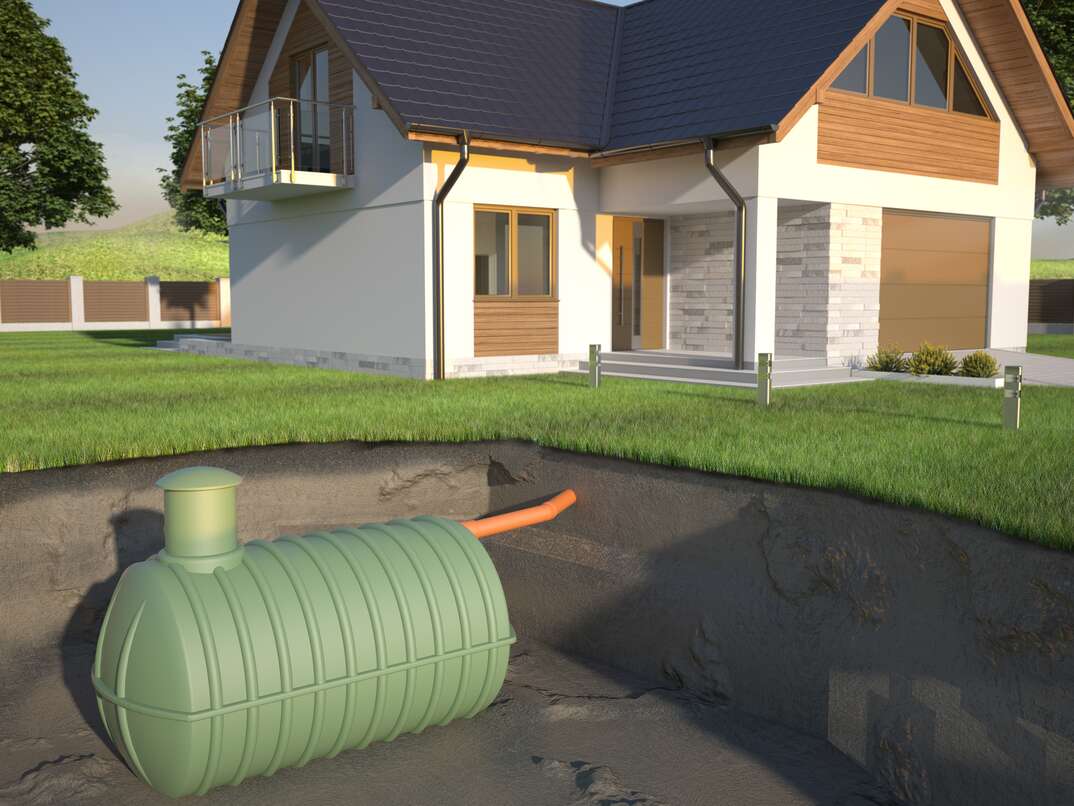When it comes down to homeownership, certain aspects tend to remain hidden from to view until they need attention. The septic tank is just one such important but often ignored aspect of a house. It’s simple to assume that it will do its job perfectly without maintenance. Like all system, have a limit to their time span of operation and have to be replaced at some point.

The cost of replacing a septic tank can be an expensive financial burden for homeowners who aren’t prepared. The total price is determined by numerous factors, so it’s important to budget for a new system.
To figure out the true cost of an entirely new septic system it’s crucial to look at more than just the cost. It’s not simply about removing the old tank before installing the new one. More than that, a variety of components and services make up the total cost. Costs are accrued at every stage of the process, for example, obtaining permits and hiring experts, and even excavation and installation.
The cost of replacing the septic system, which comprises the installation costs for the leach field as well as it’s septic system in general is an important factor. The cost of a new tank is subject to a wide range of variations based on the dimensions and material of the tank and the difficulty of the installation. The price can be influenced by your location along with local regulations and the soil conditions. Consult with septic systems experts who will assess your requirements and provide a precise estimate. They’ll be taking into consideration factors such as the dimensions and layout of your leach field. This will ensure an accurate understanding of the total cost involved in the replacement of your septic systems project.
Leach fields, also known as drainfields, are another major cost. This component plays a vital function in wastewater treatment as well as dispersal. It is important to consider the best option when replacing a damaged or defective leachfield, or one that is failing. This can have a significant impact on the cost of a septic system replacement. Factors such as the size of the leach field soil composition and accessibility all affect the cost, which is why it’s important to think about these factors when calculating the cost total.
In addition to the actual costs homeowners should also be aware of the monetary costs that are intangible with the replacement of their septic systems. You might have to leave your house temporarily or reduce your water consumption during the installation. This inconvenience should be incorporated into your plans, since they could impact your daily routine, and possibly create additional costs, like accommodation costs or changes to your daily schedule.
It’s important to remember that regular maintenance of your septic tank is essential for extending its life span and decreasing the chance of premature replacement. Failure to perform maintenance could result in bigger issues later on, including damage to the drainfield, or failure of the tank. Incorporating septic system maintenance costs in your budget is an intelligent investment that could save you money in the long run.
By now, you may have realized that determining the septic system cost is not a straightforward task. It requires careful consideration of various factors, ranging from the dimensions and materials of the tank, as well as the complexity of the installation as well as the state of the leach field. The place of your residence and the local regulations may influence the price. To obtain a cost estimate that is accurate you must consult an expert with experience in the repair of septic systems.
You could be surprised after you upgrade your septic tank to discover that you’re facing additional expenses you didn’t expect. These costs can accumulate quickly, which is why it’s crucial to keep track of them prior to making a choice.
The hidden costs of replacing a septic system include:
The cost of permits and inspections. It is necessary to obtain permits from your local government before beginning working on your septic system replacement. The permits can be costly and it is possible that you will have to pay for inspections.
The expense of excavation and removal. Before the new system can be installed, it will be necessary to dismantle and remove the previous system. This could be an extremely expensive undertaking, especially if it is difficult to gain access to the old system.
The expense of backfilling and Grading. When the old system is taken away, it will be necessary to grade and backfill the hole. This is necessary to make sure that the new system is correctly draining.
The cost of landscaping. You might need to plant a garden in the area after the installation of the new system to maintain it in a neat and tidy manner. It could be costly, especially if a landscaper is required.
When budgeting to replace your septic tank, make sure to factor in the cost-savings that aren’t obvious. By doing so, you can stay clear of any unexpected costs later on.
Affording eco-friendly septic options is a great option for those who are on a tight budget. They are cost-effective and green, as they lower water pollution and limit runoff. Eco-friendly septic systems are also becoming more affordable and accessible and are a great option for anyone looking to reduce the environmental impact of their home, without going broke. While there are upfront costs to switch to an eco-friendly system, the savings in time will more than compensate for the initial costs. Green living is not simply a fashion statement, it’s an essential lifestyle choice that anyone who they are concerned about the future of our world. It gives you peace of assurance that you’re doing your part to help the global community. It will also ensure that your home is functioning effectively, with less work and less monthly expenses.